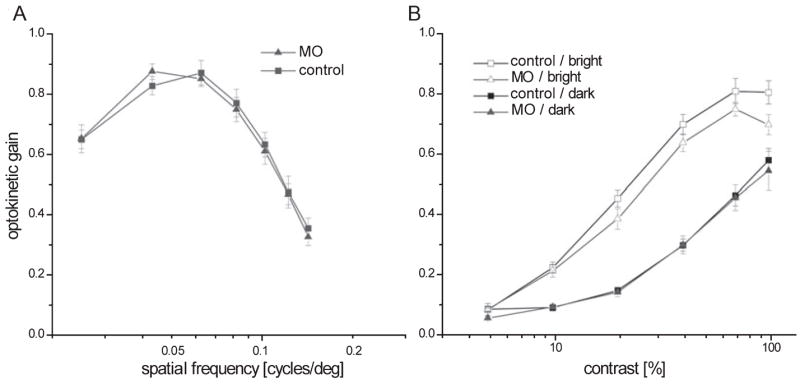Fig. 7.

Behavioural analysis of RPE65-deficient larvae. (A) Optokinetic gain triggered by moving gratings (velocity 7.5 °/s, contrast 99%) of varying spatial frequency under moderate background intensity (120 cd/m2) showed no significant reduction in visual acuity in RPE65 morphants (n = 8) compared to controls (n = 8). (B) Optokinetic gain measured with moving gratings (velocity 7.5 deg/s, spatial frequency 0.06 cycles/deg) of varying contrast. Contrast sensitivity of the optokinetic response was not significantly reduced in RPE65-deficient larvae when measured with a dark grating stimulus (n = 5, 0.36 cd/m2, closed symbols). Under high intensity conditions (n = 5, 386 cd/m2, open symbols) optokinetic gain was slightly reduced (two-way ANOVA with repeated-measures on factor contrast, P < 0.05).
